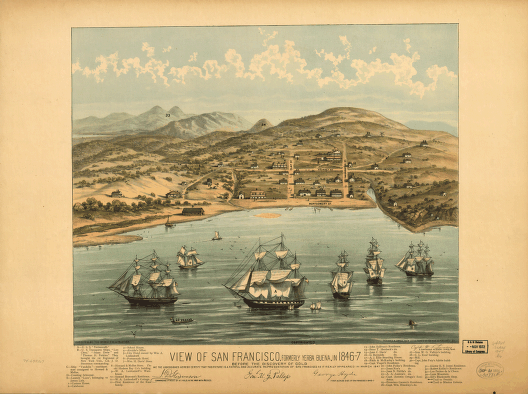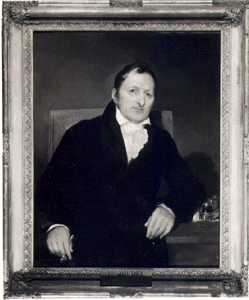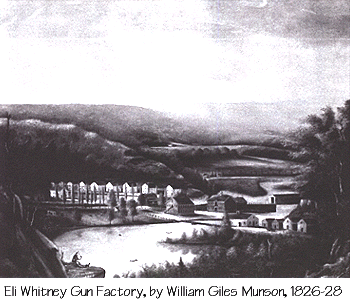Craft Knowledge
Theme: before specialized
technical
knowledge developed, new technology came from local ingenuity
The first transition was
from
local ingenuity to craftspeople with specialized knowledge
(learned
from
apprenticeship, not from schooling)

image
credit
Setting:
- In 1790 the U.S.
was
an
agricultural
nation with little transportation beyond the coast (in
1775 it took a
week
to travel by land from Boston to New York).
Population 4,600,000,
4% urban (201,655). Experiments with industry and the
building of a
transportation
system were about to begin, but most technology was
produced by local
craftsmen
(mechanics, not engineers) who had very little specialized
knowledge,
just
experience and ingenuity.
- In 1830 the U.S.
had
the
beginnings
of a transportation network (1277 miles of canals and 73
miles of
railroads)
and significant small-scale industry (particularly
textiles and machine
shops), larger-scale industry and the railroad network
were about to
develop.
Population 12,866,020, 9% urban (1,127,247).
Engineering had
become
a profession and engineers had substantial specialized
knowledge, but
they
learned that by apprenticeship, not by going to school.
- In 1870 the U.S.
had a
fairly complete
railroad network (50,000 miles--including the first
transcontinental
railroad
completed in 1869) and large-scale industry in textiles
and
papermaking, mass
production of complex metal machines (watches, sewing
machines,
bicycles,
agricultural machinery) was about to develop, along with
the electrical
industry. Population 39,818,449, 25% urban
(9,902,361).
Engineering
schools are being founded in large numbers as education
begins to
replace
apprenticeship training.
- In 1910.
Population
91,972,266,
46% urban (41,998,932). New fields of science-based
engineering
are
becoming increasingly important, and more and more
engineers work for
the
new big businesses.
- In 1950.
Population
150,697,361,
59% urban (88,927,464).
Can you think of any
American
inventor/engineers before the civil war?

Eli Whitney (for
more
information see Discover
Eli
Whitney or an 1832 Memoir
of Whitney):
- Born in Westborough
Mass--30 miles
inland from Boston--in 1765.
- a farming family,
but
they
also
had a workshop where Whitney made various items for
sale. When he
was 16 he installed a forge in his father's workshop to
make and sell
nails
when British-made nails became unavailable during the
revolutionary
war.
Then when competition returned he went on to other
products, including
hat pins and walking sticks.
- attended Yale,
where
he
studied
mathematics as well as Latin and Greek and thought about a
career as a
lawyer.
- Accepted a job in
South
Carolina,
but stopped with friends who had a
plantation near Savannah where they were
experimenting with growing
upland cotton.
- He learned that the
problem of removing
seeds from upland cotton was limiting the development of
cotton farming
and decided he could solve the problem. In 6 months
he had a
working
cotton gin. (For more on the history and mechanics of
cotton gins see Cotton
Gins.)
- In 1794 Whitney got
his
patent, but his business failed
- his idea was clever
but
his machine
was simple--anyone equipped with simple blacksmith's and
carpenter's
tools
could build their own once they saw the principle.
He could sue
them
for patent infringement but no one cooperated and
it was too expensive to undertake so many
small
lawsuits (and they were sometimes
unsuccessful). The cotton gin revolutionized the
economy of
the
south but didn't make its inventor rich.


U.S. Musket Model 1798
Type
III Contract Flintlock .69, Springfield Armory
Whitney turned to
gun-making in
1797
- Got a contract with
the
federal
government in June 1798 to make 10,000 muskets in just
over two years
at
a price of $13.40 each.
- He had nothing to
deliver
when the
first deadline came, for 4,000 muskets by Sept. 30,
1799. To
avoid
cancellation of the contract he claimed to be inventing a
new
principle;
he said he would "form the tools so the tools themselves
shall fashion
the work."
- In Jan. 1801 he was
still
nowhere
near done a contract that was supposed to be completed in
Sept. 1799,
but
he provided a (fake) demonstration of his new idea--he
brought to
Washington
10 lock mechanisms and showed that they could be
interchanged. He
was replacing one whole mechanism with the other, not
interchanging the
component parts.
- Jefferson and the
Army
were impressed,
and agreed to renegotiate Whitney's contract from $10,000
to $30,000
and
from just over 2 years to 5 years.

Whitney never
met
his goals of
mechanization
of the gun-making process or of making guns with interchangeable
parts (Robert S.
Woodbury, "The
Legend
of Eli Whitney and Interchangeable Parts," Technology
and
Culture Vol. 1, No. 3 (Summer, 1960), pp. 235-253).
- His key technique was
jig
filing,
which did allow the use of less-skilled labor and eventually
made him a
profit.
- But the idea he had
promoted became
the dream of the Army and the more innovative gun-makers who
took army
contracts,
and was finally achieved in the 1840s.
- Whitney had finally
gotten
some
financial rewards from his cotton gin invention and had
invested the
money
well. He got some more contracts for musket
production, and
despite
fights with the government during the War of 1812 he became
a respected manufacturer
and engineer. He dabbled in other machinery and made
significant improvements in milling machines, but illness
curtailed his
activities after 1822 and he died in 1825.
Whitney gets made
into
a
boring
elementary
school hero;
his is
actually
a very complex story
Conclusions:
Whitney
is an example
of
the transition between local
ingenuity and
apprentice-trained
engineers. The local carpenter could
build a bridge, but you need specialized
knowledge
to lay out a canal or manufacture guns.
Quote of the Day: "Only an
inventor knows
how to borrow, and every man is or should be an inventor. "
- Ralph Waldo Emerson, Letters and Social Aims--Quotation
and
Originality (1876)
this page written and copyrighted by Pamela
E. Mack
last updated 8/29/2005



